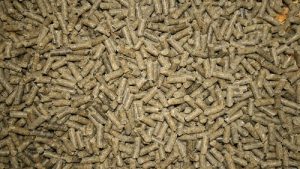
When it comes to choosing between wood pellets and alfalfa pellets, understanding their uses, benefits, and drawbacks is essential. Both have distinct applications, from fuel to animal feed, and even agricultural machinery. This article explores the key differences between these two pellet types to help you make an informed decision.
Wood Pellets: Uses and Benefits
Wood pellets are primarily used as a renewable energy source for heating and power generation. Made from compressed sawdust and wood waste, they are an eco-friendly alternative to fossil fuels. Their high energy density and low moisture content make them efficient for combustion in pellet stoves and boilers.
However, wood pellets are not suitable for animal consumption. They lack the nutritional value required for livestock, unlike alfalfa animal feed, which is rich in protein, fiber, and essential minerals.
Alfalfa Pellets: A Versatile Option
Alfalfa pellets are widely used as high-quality animal feed, particularly for horses, cattle, and rabbits. They provide essential nutrients, including protein, calcium, and vitamins, supporting healthy growth and digestion. Additionally, alfalfa pellets can be used as an organic soil conditioner, improving soil structure and fertility.
Another advantage of alfalfa pellets is their role in sustainable farming. When processed using modern agricultural machinery, alfalfa can be efficiently harvested, dried, and pelletized, reducing waste and increasing productivity.
Fertilizer Potential: Alfalfa vs Chemical Fertilizers
While wood pellets are not used as fertilizers, alfalfa pellets can decompose and enrich the soil with nitrogen and organic matter. This makes them a natural alternative to chemical fertilizers, which can harm soil health over time. However, for quick nutrient release, some farmers combine alfalfa with supplements like Ammonium Sulfate fertilizer to balance nitrogen levels.
Key Considerations When Choosing Pellets
-
Purpose: Use wood pellets for heating and energy, alfalfa pellets for animal feed or soil enrichment.
-
Cost: Wood pellets are generally cheaper for fuel, while alfalfa pellets offer higher nutritional value.
-
Environmental Impact: Both are sustainable, but alfalfa supports circular agriculture by returning nutrients to the soil.
Conclusion
The choice between wood pellets and alfalfa pellets depends on your needs. For fuel, wood pellets are ideal, while alfalfa pellets excel as alfalfa animal feed and organic fertilizer. With advancements in agricultural machinery, both pellet types contribute to efficient and eco-friendly farming practices. Whether you prioritize energy, nutrition, or soil health, understanding these differences ensures optimal use in your operations.
